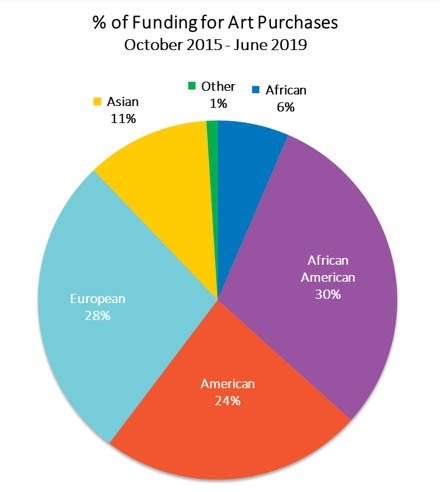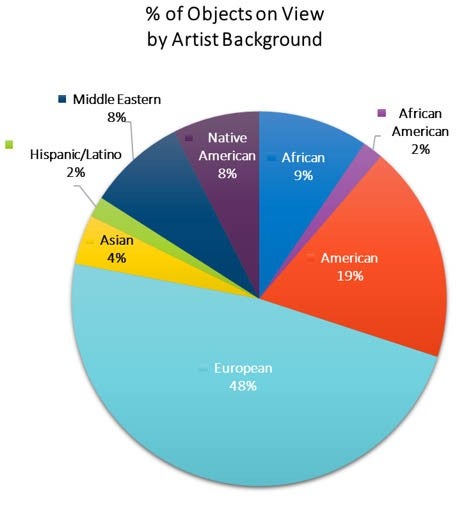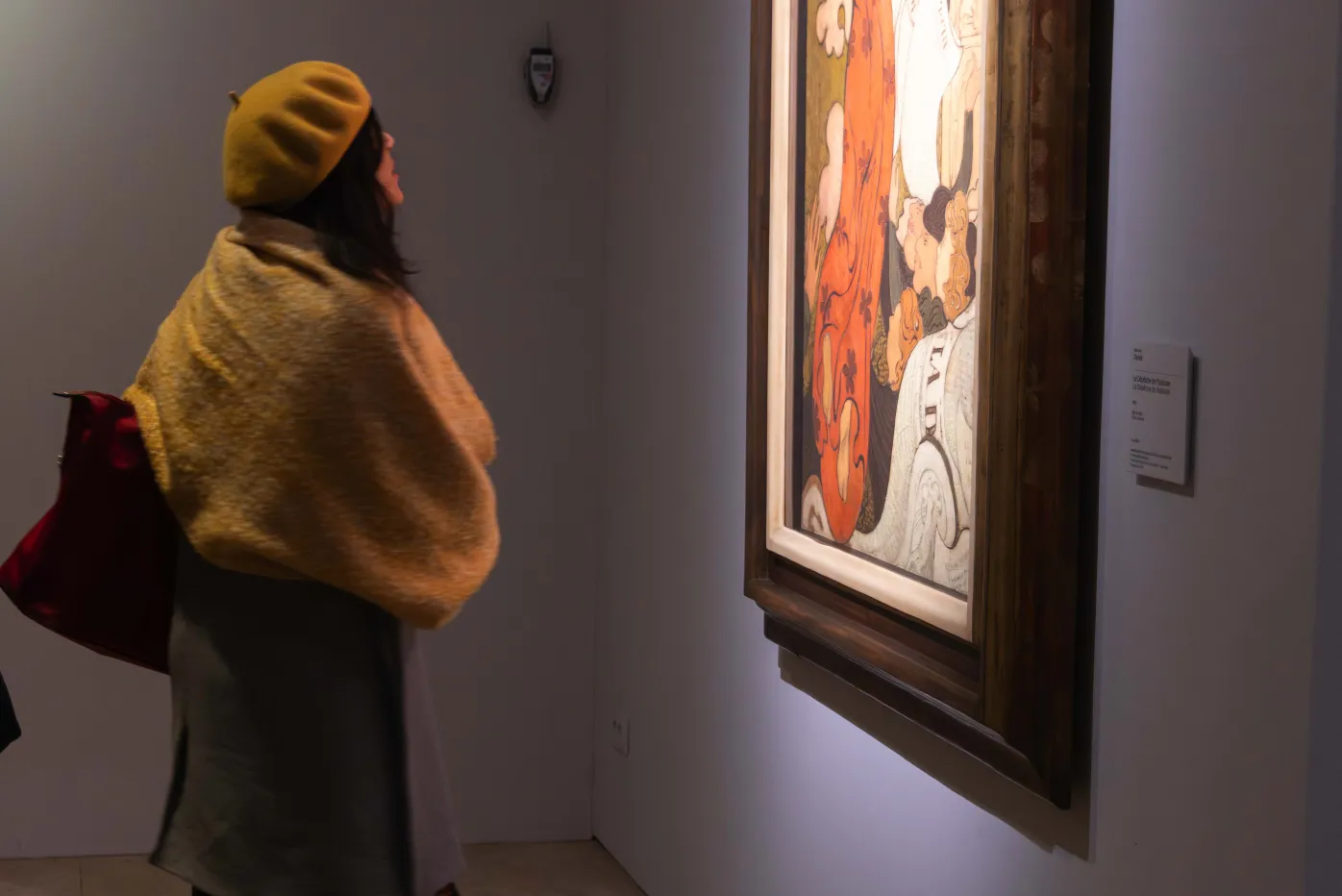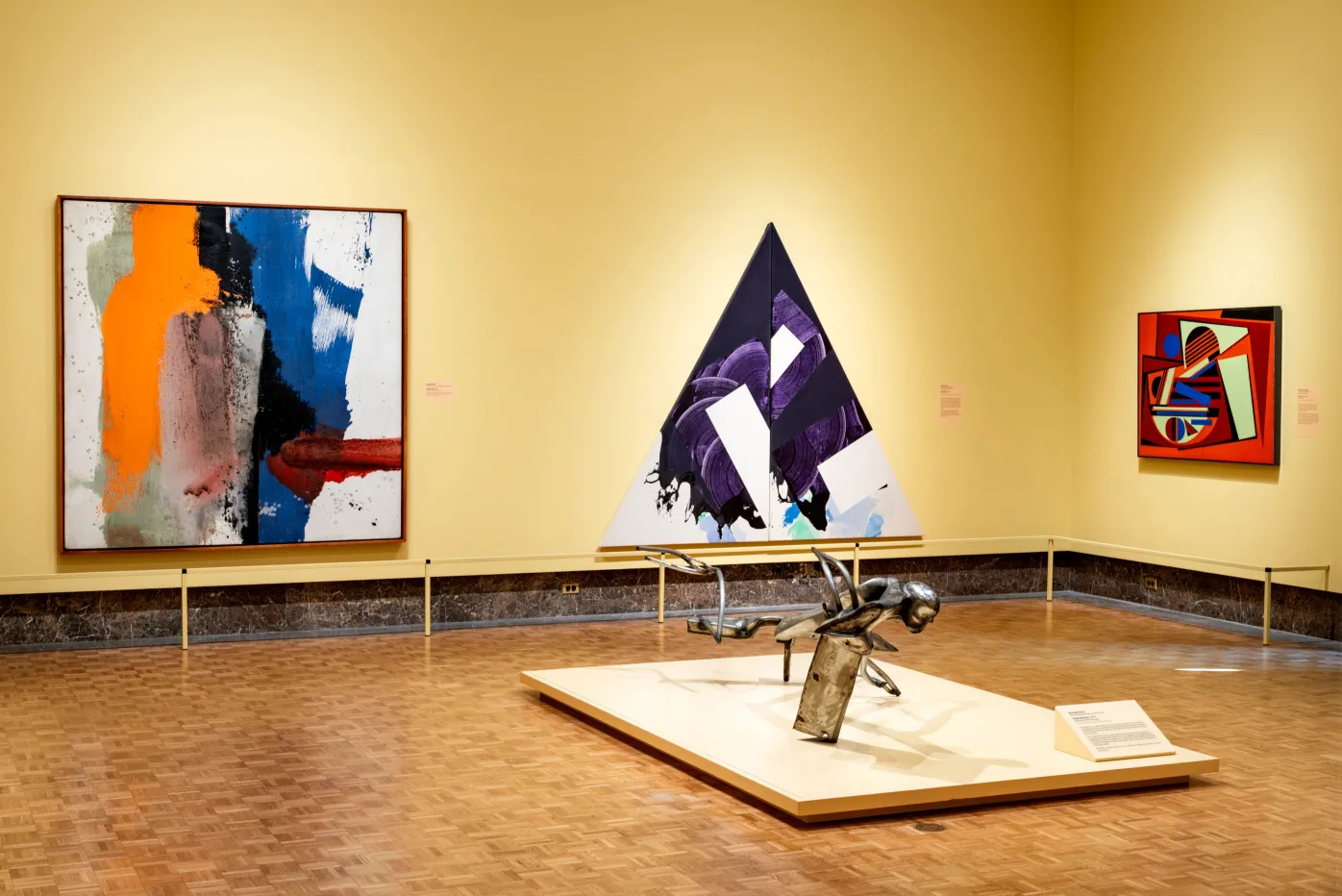From the Director, August 2019
Updated Jul 20, 2022
Our Evolving Collection
The collection is the heart of every art museum, and at the DIA, we are fortunate to have one of the best in the world. With more than 65,000 objects representing hundreds of cultures spanning world history, the DIA’s collection is at the center of all that we do.
But museum collections are not static; they are dynamic and evolving. We see artworks through new lenses in today’s world, new works are purchased or donated, and what a museum chooses to have on display at a given time can also be perceived through the lenses of specific intentions or points of view about art history, society, human creativity, and local beliefs, among others.
When I became director, I “inherited” not only the collection but also the legacies of the curators and directors who came before me throughout the DIA’s 130-plus year history. Their choices for what the museum acquired reflected the times in which they lived and the audiences they served. In fact, we can visualize the composition of our art collection as a tangible cross-section of our recent history. It provides an amazing opportunity to explore our past in order to improve our present and plan for a brighter future.
Today, as we work to serve new audiences and live in a more inclusive society, the DIA can make improved choices that help the collection evolve and better mirror our community. As director, working with our curators, we are making a strategic effort to add more works by artists of color and women to our collection, and to ensure that what is on view in our galleries represents more accurately the diversity of our community and the talent of our times. In today’s world, representational equity is more important than ever.
 At the DIA, unlike many museums, we are very fortunate to have endowment funds created by generous donors that are exclusively dedicated to acquire works of art for the collection. Most of these funding sources have restrictions to purchase works in specific areas, such as European and American art. This limits our ability to expand our collection in other areas. However, we also have some art acquisition funds free of any restrictions, and if we use those intelligently we can make progress expanding collections which do not have designated funding, such as African American, Native American and Asian art, just to name a few. Since 2015, 30% of the funds used for art acquisitions were devoted to purchase 39 works by African American artists. We invested more in this collection area than in any other category (American 24%, European 28%; see chart at left). Among the African American pieces I would like to highlight are David Hammons’ Bird; Archibald Motley’s Café Paris, and Elizabeth Catlett’s Sharecropper. We have also made a special effort to focus on the newly reinstalled Asian galleries, acquiring significant pieces in this area (11% of our funding), such as the powerful sculpture representing the god Yamantaka embracing his consort Vajravetali and an extraordinary Mughal painting from the “Late Shah Jahan album” patron of the Taj Mahal.
At the DIA, unlike many museums, we are very fortunate to have endowment funds created by generous donors that are exclusively dedicated to acquire works of art for the collection. Most of these funding sources have restrictions to purchase works in specific areas, such as European and American art. This limits our ability to expand our collection in other areas. However, we also have some art acquisition funds free of any restrictions, and if we use those intelligently we can make progress expanding collections which do not have designated funding, such as African American, Native American and Asian art, just to name a few. Since 2015, 30% of the funds used for art acquisitions were devoted to purchase 39 works by African American artists. We invested more in this collection area than in any other category (American 24%, European 28%; see chart at left). Among the African American pieces I would like to highlight are David Hammons’ Bird; Archibald Motley’s Café Paris, and Elizabeth Catlett’s Sharecropper. We have also made a special effort to focus on the newly reinstalled Asian galleries, acquiring significant pieces in this area (11% of our funding), such as the powerful sculpture representing the god Yamantaka embracing his consort Vajravetali and an extraordinary Mughal painting from the “Late Shah Jahan album” patron of the Taj Mahal.
These acquisitions and others by artists of color help us demonstrate increased equity in what we have on view for our visitors.
Currently, 67% of the works on view are by white European or American artists; the remaining 33% are by artists of color, as you can see in the chart at right. Looking at the inherited DIA history of collecting, we are starting to change the pattern. We are excited about the opportunity to continue working towards balancing our collection, ensuring we are relevant to our communities, and bringing amazing art for everyone’s enjoyment.

DIA Director, Salvador Salort-Pons in Rivera Court
Our Evolving Collection
The collection is the heart of every art museum, and at the DIA, we are fortunate to have one of the best in the world. With more than 65,000 objects representing hundreds of cultures spanning world history, the DIA’s collection is at the center of all that we do.
But museum collections are not static; they are dynamic and evolving. We see artworks through new lenses in today’s world, new works are purchased or donated, and what a museum chooses to have on display at a given time can also be perceived through the lenses of specific intentions or points of view about art history, society, human creativity, and local beliefs, among others.
When I became director, I “inherited” not only the collection but also the legacies of the curators and directors who came before me throughout the DIA’s 130-plus year history. Their choices for what the museum acquired reflected the times in which they lived and the audiences they served. In fact, we can visualize the composition of our art collection as a tangible cross-section of our recent history. It provides an amazing opportunity to explore our past in order to improve our present and plan for a brighter future.
Today, as we work to serve new audiences and live in a more inclusive society, the DIA can make improved choices that help the collection evolve and better mirror our community. As director, working with our curators, we are making a strategic effort to add more works by artists of color and women to our collection, and to ensure that what is on view in our galleries represents more accurately the diversity of our community and the talent of our times. In today’s world, representational equity is more important than ever.
 At the DIA, unlike many museums, we are very fortunate to have endowment funds created by generous donors that are exclusively dedicated to acquire works of art for the collection. Most of these funding sources have restrictions to purchase works in specific areas, such as European and American art. This limits our ability to expand our collection in other areas. However, we also have some art acquisition funds free of any restrictions, and if we use those intelligently we can make progress expanding collections which do not have designated funding, such as African American, Native American and Asian art, just to name a few. Since 2015, 30% of the funds used for art acquisitions were devoted to purchase 39 works by African American artists. We invested more in this collection area than in any other category (American 24%, European 28%; see chart at left). Among the African American pieces I would like to highlight are David Hammons’ Bird; Archibald Motley’s Café Paris, and Elizabeth Catlett’s Sharecropper. We have also made a special effort to focus on the newly reinstalled Asian galleries, acquiring significant pieces in this area (11% of our funding), such as the powerful sculpture representing the god Yamantaka embracing his consort Vajravetali and an extraordinary Mughal painting from the “Late Shah Jahan album” patron of the Taj Mahal.
At the DIA, unlike many museums, we are very fortunate to have endowment funds created by generous donors that are exclusively dedicated to acquire works of art for the collection. Most of these funding sources have restrictions to purchase works in specific areas, such as European and American art. This limits our ability to expand our collection in other areas. However, we also have some art acquisition funds free of any restrictions, and if we use those intelligently we can make progress expanding collections which do not have designated funding, such as African American, Native American and Asian art, just to name a few. Since 2015, 30% of the funds used for art acquisitions were devoted to purchase 39 works by African American artists. We invested more in this collection area than in any other category (American 24%, European 28%; see chart at left). Among the African American pieces I would like to highlight are David Hammons’ Bird; Archibald Motley’s Café Paris, and Elizabeth Catlett’s Sharecropper. We have also made a special effort to focus on the newly reinstalled Asian galleries, acquiring significant pieces in this area (11% of our funding), such as the powerful sculpture representing the god Yamantaka embracing his consort Vajravetali and an extraordinary Mughal painting from the “Late Shah Jahan album” patron of the Taj Mahal.
These acquisitions and others by artists of color help us demonstrate increased equity in what we have on view for our visitors.
Currently, 67% of the works on view are by white European or American artists; the remaining 33% are by artists of color, as you can see in the chart at right. Looking at the inherited DIA history of collecting, we are starting to change the pattern. We are excited about the opportunity to continue working towards balancing our collection, ensuring we are relevant to our communities, and bringing amazing art for everyone’s enjoyment.


